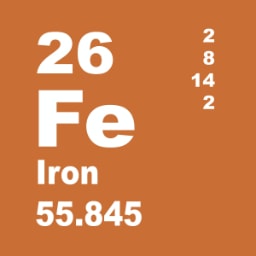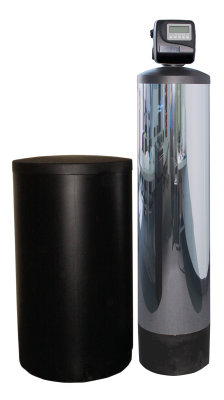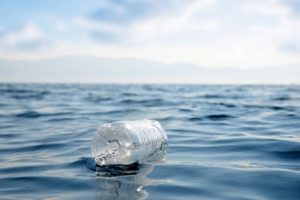What is Iron?
Iron is the most abundant heavy metal and the fourth most abundant element in the earth’s crust. It makes up 5% of the earth’s crust. However, there are also other varied places where iron occurs naturally. It is generally present in the atmosphere due to emissions from thermal power plants, the steel and iron industry, and incineration. The primary industrial uses of iron are in steel production, producing paint pigments, electrical materials, and polishing agents. Meats and cereals are primary natural food sources of iron.
Iron is found in nearly all water supplies. It is commonly found in groundwater and directly results from its natural existence in underground rock formations or aquifers. It is the most common dissolved heavy metal found in groundwater and wells. Found in the surface water of lakes and ponds, iron is soluble and comes from rainwater, melting snow, and atmospheric emissions.

Is Iron Harmful?

Iron is an essential human element, and daily dietary Iron requirements vary per person. Most people receive a sufficient amount of iron from their daily diet. However, consistently low iron levels can cause health issues such as impaired mental performance and development in children, reduced adult performance, and possibly decreased oxygen delivery. An Iron supplement may be necessary for individuals with an iron deficiency such as anemia. It is extremely rare to ingest enough dietary iron to produce toxic effects in the body. Still, a rare and severe condition called hemochromatosis occurs with ingestion and build-up of excessive amounts of iron, which requires medical treatment.
Generally, drinking water that contains iron does not harm the body. However, long periods of drinking tap or well water with high iron levels may lead to possible stomach, heart, liver, or kidney issues. The water takes on a metallic taste which may produce diarrhea or nausea.

Excessive amounts of iron in your water can cause irritating hair and skin problems. The build-up of slimy iron causes hair to become dry, brittle, and produces a metallic odor. If there is an extremely heavy build-up, it can turn light-colored hair metallic orange and cause dark hair to gain red highlights. Over time, excess iron can discolor teeth turning them dull and yellow. Also, heavy iron exposure causes damage to skin cells, wrinkling, and dry skin.
Eliminating or controlling moderate to high levels of iron is extremely important to ensure your water is the safest and cleanest it can be. If only small amounts of iron are present, water treatment may not be necessary. However, having excess iron in your household water does create several serious issues.
Safe Iron Level Guidelines
The EPA has set iron levels of 0.3mg/liter as acceptable limits in drinking water. The EPA does not list iron as a Maximum Contaminant, but it is one of 15 Secondary Maximum Contaminant Levels it has also developed. These Secondary contaminants are not considered human health risks. They were established to help guide public water systems to manage the aesthetic conditions in their drinking water and include odor, taste, and color.
These Standards help guide public water systems on removing enough chemicals to acceptable levels where they are not noticeable. Secondary contaminants such as iron that test above the maximum set guideline levels produce undesirable and unwanted effects on public drinking water and damage household water equipment. They produce cloudy or colored water and a foul smell and taste, which may cause many people to stop drinking and using their water, thinking it is unsafe.
Is All Iron the Same?
There are four distinct types of iron found in water. In surface water such as lakes, streams, and often deep water, ferrous iron produces clear water that can cause metallic or off-taste and stain fixtures. Due to oxidation, ferric iron is found in well and groundwater, and it appears red or rusty. When iron combines with certain bacteria, it creates a thick rusty sludge that causes staining, plugging, taste, and odor problems known as iron bacteria. The fourth type is heme iron and is bound to organic compounds such as vegetative decay (tannins or humic acids), causing unsightly staining, and can be clear, yellow, brown, or pink.
The two most typical types of iron found in water are ferrous and ferric. Fortunately, they can generally be removed with conventional water treatment methods.
Ferrous iron comes from rocks and soil with soluble high iron contents. As rain and snowmelt over the rocks and soil, iron dissolves, making clear water or ferrous iron. Water coming from the tap will be clear but turns red or brown after standing. It will oxidize and cause staining when exposed to oxygen or oxidizing chemicals, including detergents and soaps.

Ferric iron is commonly found in groundwater and contains iron already oxidized; it is also known as red water iron. Ferric iron forms insoluble particles that cause rust, odors, and staining. Iron minerals turn to rust when exposed to water and oxygen, causing stains to laundry, plumbing fixtures, and appliances. Ferric water coming from the tap appears red or yellow.
The other two forms of iron are iron bacteria and heme iron; both are organic, making them more challenging to control and remove. They require professional water treatment technicians using more advanced treatment methods tailored to your specific water issues and contaminants.
The Problem with Iron
Iron creates unsightly and unsanitary red, brown, and yellow stains on bathtubs, toilets, laundry, sinks, and dishes that are almost impossible to remove. It causes laundry to take on a dull yellow appearance. The iron water can take on a repulsive black color along with a foul odor. Iron and sulfur produce a rotten smell that seeps through your dishes, causing an awful metallic taste to drinks and especially to food cooked in the water.

Water in rural areas is prone to higher iron levels, as well as higher sulfur and manganese levels, and is often found in rural wells. Manganese produces black, brown staining on plumbing and appliances, while sulfur (hydrogen sulfide) causes a rotten-egg odor and is corrosive. Each presents problems, but together they produce foul-smelling, dark rusty colored, and metallic tasting water that appears unsafe for drinking or household use.
Iron is one of the most common contaminants found in rural and well water, making it one of the most prevalent issues requiring water treatment to improve water quality. It is also one of the most troublesome and persistent challenges in water treatment.
Symptoms of Iron in Water
- Metallic / distorted taste
- Brown-red stains on fixtures, dishes, and laundry
- Water turning brown / red when drawn at the tap, upon cooking or heating
- Reddish colored water with red particles settling to the bottom of a glass
- Brownish cast that does not dissipate
- Clothing becomes discolored when laundered
- Darkens beverages
Testing Water for Iron Type and Amount
Iron occurs naturally in most water and is an essential mineral, but increased levels cause many undesirable issues. It is vital to consult a professional water treatment expert to control and eliminate unwanted iron.
The first step is to perform a professional lab water quality analysis to provide a snapshot of your current water condition. It will show the amount and type of iron and other contaminants such as sulfur, manganese, and chlorine levels. The water test results will help determine your household’s best water treatment system. Keep in mind that different water types will produce various water issues, making it imperative to seek the advice of a trusted water expert to ensure the purest water treatment available.
Several excellent home water treatment methods remove iron, iron bacteria, and other contaminants from household water.
Iron Removal Water Systems
Ferrous iron in water is prevalent and is relatively easy to remove. There are two methods for eliminating ferrous or clear water iron. The first uses a water softener, and the second method uses an Air Capsulate Filter System.

A water softener uses the process of ion exchange to remove hard water minerals such as calcium and magnesium. Water softeners that use salt can effectively remove iron in concentrations of approximately 0.3 ppm up to 10 ppm, starting with a base filtration unit up to a high-end system. The softeners will work best with a neutral Ph of 7.0 or lower and generally remove ferrous (clear) iron.
Red water iron is also known as ferric iron. When water comes from the tap, it is red, yellow, orange with reddish particles suspended that settle out. It is actually clear water iron that has been oxidized into a particulate form. Ferric iron is also relatively easy to remove with conventional water treatment. An Air Capsulate Iron Filtration System eliminates ferric iron.
The Air Capsulate Iron Filtration System is exceptional at removing both ferrous (clear) and ferric (red) iron. The pressurized air is injected; it oxidizes the ferrous iron and converts it into red water or ferric iron precipitate particles. The particles are removed through a specialized media bed and rinsed away in the systems’ regeneration process.

Air Capsulate Iron Filtration Systems work best for water with no iron-reducing bacteria or sulfur-reducing bacteria and a PH between 7.0 and below 8.5. The filtration system also helps remove manganese, hydrogen sulfide rotten egg smell and eliminates red rust and iron staining. Air encapsulate filter systems do not require salt or chemicals, making them an environmentally friendly iron removal option. The Excalibur Zentec Iron Filtration System offers high-quality, low-maintenance iron removal providing peace of mind for clean, clear water backed by a worry-free warranty.
The other two types of iron are iron bacteria and heme iron; both are organic and produce gelatinous-like deposits of rusty iron scum. These forms of iron are more difficult to remove as the thick scum shields the iron from more basic treatment methods. More advanced water treatment is needed to eliminate these types of iron.
Professional water experts recommend advanced water filtration systems based on water quality analysis results. The most effective methods for removing iron bacteria and heme iron are chlorination, hydrogen peroxide, or ozonation filtration systems.
With several iron removal methods available, choosing the treatment that will effectively eliminate iron and its many unwanted and undesirable issues is essential. The right iron removal system will deliver years of safe, clean, and pure water for your family and throughout your household.
Have your water professionally tested, and let the experienced water experts at Excalibur Water Systems recommend and design your perfect Zentec Iron Filtration System.
For more information about Excalibur Iron Removal Filters, please contact us.


